Showing 21–30 of 333 results
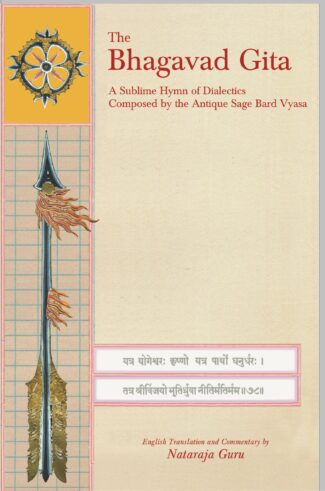
Standing tall in the field of Bhagavad Gita commentaries, this book is the result of the revolutionary treatment given by Nataraja Guru to this ancient masterwork of the human race to be appreciated as a universally applicable psychology of life and living.
Nearing its fiftieth year of being continuously in print, Nataraja Gurus monumental analysis of one of the greatest philosophical classics of Planet Earth is now available in a new edition. Generations have benefited from its unique angle of vision, which introduces a universal framework that does not depend on faith to impart its message of infinite potential for every human being. The Gurus wry humor, fresh insights, and fearless challenges to prevailing orthodoxies, are clear marks of his style. His analysis is radical by any measure, yet it must be noted that much of the scientific and philosophic community has evolved over the same half century toward a similar global, broad-minded outlook to the one which the Guru brings to bear in these pages, and which not coincidentally is advocated by the Bhagavad Gita itself.
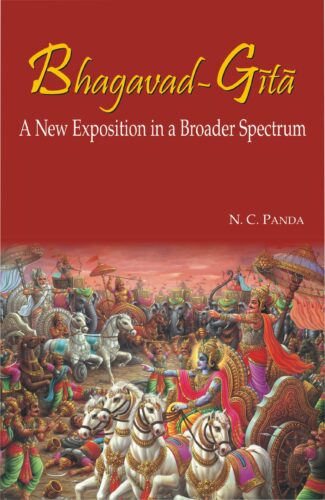
This is an extraordinary volume on Bhagavad-Gita in that, besides the usual Sanskrit verses, their meanings and commentaries, this book covers all the eighteen chapters in the form of essays containing the reflections of the author who has analyzed the topic in the light of modern thought in a broader spectrum.
This Exposition on the Bhagavad-Gita is an exception to the traditional translation of and commentary on the scripture. It covers all the eighteen chapters of the Gita in the form of essays, with English translation of almost all verses and commentaries thereupon. In addition, the essays do contain the reflections of the author who has analyzed the topics in the light of modern thought in a broader spectrum. The Sanskrit text in Devanagari script, with Roman transliteration, has been appended to the main text.
The Gita is not a religious book. It does not belong to any single faith. In the language of Aldous Huxley, it is the perennial philosophy of mankind. Keeping this context in view, the book has been addressed not only to the present citizens but also to the whole mankind which will inhabit the earth in the future.
This scripture had its birth in a battlefield. Symbolically speaking, everybodys life is a battleground. Arjuna represents all members of the human species. In a situation of agony and dejection, being utterly perplexed, he could not decide what to do and what not to do. The Gita provides practical solutions to the problems of life and leads the path to liberation. It humanizes and divinizes man. The present book gets success if it helps man ascend humanely and spiritually.

This is an extraordinary volume on Bhagavad-Gita in that, besides the usual Sanskrit verses, their meanings and commentaries, this book covers all the eighteen chapters in the form of essays containing the reflections of the author who has analyzed the topic in the light of modern thought in a broader spectrum.
This Exposition on the Bhagavad-Gita is an exception to the traditional translation of and commentary on the scripture. It covers all the eighteen chapters of the Gita in the form of essays, with English translation of almost all verses and commentaries thereupon. In addition, the essays do contain the reflections of the author who has analyzed the topics in the light of modern thought in a broader spectrum. The Sanskrit text in Devanagari script, with Roman transliteration, has been appended to the main text.
The Gita is not a religious book. It does not belong to any single faith. In the language of Aldous Huxley, it is the perennial philosophy of mankind. Keeping this context in view, the book has been addressed not only to the present citizens but also to the whole mankind which will inhabit the earth in the future.
This scripture had its birth in a battlefield. Symbolically speaking, everybodys life is a battleground. Arjuna represents all members of the human species. In a situation of agony and dejection, being utterly perplexed, he could not decide what to do and what not to do. The Gita provides practical solutions to the problems of life and leads the path to liberation. It humanizes and divinizes man. The present book gets success if it helps man ascend humanely and spiritually.
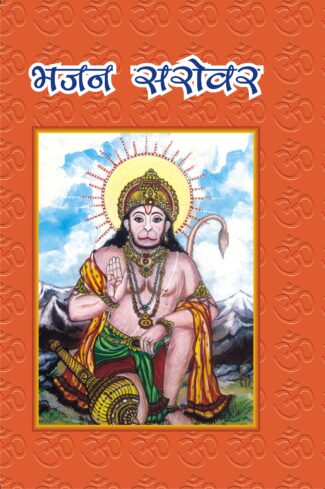
Devotional songs frequently sung by the common public in praise of various Gods/Goddesses like Sri Ganesa, Siva, Krsna, Hanuman, Rama, Khattu Syama, Durga, etc. have been compiled in this hard-bound volume at a very nominal price.
Devotional songs frequently sung by the common public in praise of various Gods/Goddesses like Sri Ganesa, Siva, Krsna, Hanuman, Rama, Khattu Syama, Durga, etc. have been compiled in this hard-bound volume at a very nominal price.

This book is a collection of more than 350 bhajans. It has an amalgamation of old and new bhajans. Its bhajans are different from that of Bhajan Sarovar (Part 1). It is a rare kind of collection which all householders would like to keep in their house forever.
This book is a collection of more than 350 bhajans. It has an amalgamation of old and new bhajans. Its bhajans are different from that of Bhajan Sarovar (Part 1). It is a rare kind of collection which all householders would like to keep in their house forever.
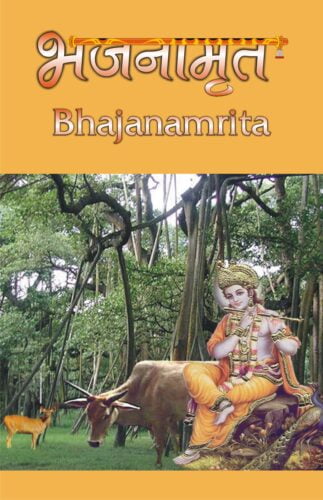
This book contains, as the title suggests, the nectar or amrita of bhajans mostly in praise of Lord Krishna, the everplayful God in the Hindu pantheon. Each bhajan has been transliterated into Roman to facilitate the readers who cannot read Devanagiri to enjoy their singing.
This book contains, as the title suggests, the nectar or amrita of bhajans mostly in praise of Lord Krishna, the everplayful God in the Hindu pantheon. Each bhajan has been transliterated into Roman to facilitate the readers who cannot read Devanagiri to enjoy their singing.

This book drives one to the commendable social dignity that women adored during the Vedic period. The values of women were considered holy and pure. Literatures from Vedic period to the British rule glorify women and treat them with high esteem. Brahmavadini Gaargi, Durgavati of Gondavana, Rani Lakshmibai and Ahlyabhai, the towering personalities India, serve as the role model for Indian women and those who are engaged in women studies.
Respecting of women was prevalent in Indian culture ever since the Vedic period. The life values of women were considered holy and pure in those times. In the literature pertaining to Ramayana, Mahabharata, Upanishads, Buddhist, Middle Age and the British times, the highly respectable status of women is clearly shown. How differently were the women viewed at various times in different eras? Which were the women who made a special place for themselves in the different fields of life? In this context we remember Brahmavadini Gargi, Rajmahishi Durgavati of Gondvana, Queen Ahilyabai, Rani Lakshmibai of Jhansi, and some other women for their special contribution in maintaining the high status of women in Indian society.
Portraying the position of women in the ancient period and comparing them to the present times when life is full of struggles, this book becomes a valuable tool for the scholars engaged in women studies and also for the people specializing in Indian traditional culture besides the general readers.

In Hindu Society, Yama is considered the God of Death who is feared. Indians, do not dread death, but instead consider as their body part. This book gives in detail the study of death and its effect on society. The search goes to its roots in the most ancient times.
Yama, in Hindu mythology, is the eschatologist and god of death. And is, thus, dreaded. Even in todays India, there is a fearful hesitancy, if not conscious avoidance, of any talk about him. Yet, paradoxically, the phenomenon of death does not evoke a similar fear in the Indian psyche accepted, as it is, a natural event, a part of life: just like poverty, sickness and old age. Here is an insightful, at once compelling exposition of the phenomenon of death, based on plurimillennial tradition of the Hindus which, despite the affirmation of Western attitudes in certain elitist sections of the urban society, has endured since the times of the Vedas and Indic Civilization. Exploring, contextually, the age-old Indian view of mortal existence: from the very moment of an individuals conception to his/her journey to the Kingdom of Yama through the major phases of birth, growth and ageing, Professor Filippi unveils a complex network of sentiments, beliefs, scriptural references, customs, hopes, ritualistic practices and much else relevant to the great adventure of death. Notwithstanding the sentimental undertones of the mrityu-theme, Dr. Filippis work outstands for its rare scientific objectivity. It has grown from years of his rigorous research effort involving not only his extensive studies of Indian literature: classical and modern, but also his interviews with Indian samnyasins, brahmanas, relatives of the dead, and the persons living around the cremation grounds. Together with visual material, bibliographic references, and a glossary of non-English terms, the book holds out as much appeal to the general reader as to the specialist.
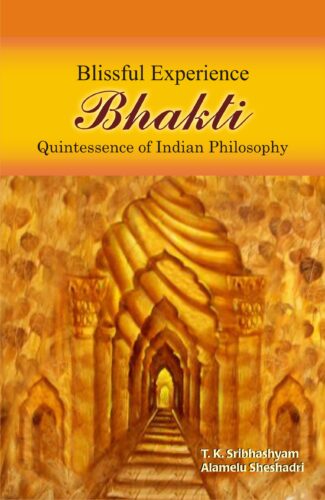
The study discusses importance of bhakti (devotion), pràpatti (self-surrender) and cultivation of peaceful emotions drawn from the great àcàrya’s intense and contemplative study of the Vedas, Upaniùads, the Bhagavad-Gãtà and the Puràõas.
Bhakti-yoga is seen as the direct path to perfection that leads to the very heart of religious consciousness. Ramanujas concept of bhakti (devotion) emphasised the practice of self-surrender through which a person realises his personality, strengths and weaknesses, and hidden powers. Bhakti, for him, acts as a link between mortals and the Ultimate Reality.
This book examines the views of Vishishtadvaita of Ramanuja on bhakti and prapatti (self-surrender). It studies in-depth the meaning of God, the soul and the Supreme Soul, and the world; the concept of bhakti; the different stages of bhakti referring to numerous sources that include the Vedas, the Bhagavad-Gita, the Upanishads and the Puranas. It focuses on Ramanujas teaching of bhakti, examining his philosophy in general and his sevenfold practice, Sadhana Saptaka to generate bhakti that expounds the qualities and significance of discrimination for viveka, freedom from sensual attachment or anger for securing vimoka, repeated reflection of God, performance of religious duty for inner mental strength, development of ethical virtues, freedom from despair and freedom from excessive joy. It understands the relevance of symbols in devotion and examines nature and use of symbols in Buddhism and Hinduism. The scholarly study discusses the importance and cultivation of peaceful emotions, and need for prayer and dietary regulations in devotion.
The volume will prove an indispensable work for scholars of Indian philosophy and religious studies.

The study discusses importance of bhakti (devotion), pràpatti (self-surrender) and cultivation of peaceful emotions drawn from the great àcàrya’s intense and contemplative study of the Vedas, Upaniùads, the Bhagavad-Gãtà and the Puràõas.
Bhakti-yoga is seen as the direct path to perfection that leads to the very heart of religious consciousness. Ramanujas concept of bhakti (devotion) emphasised the practice of self-surrender through which a person realises his personality, strengths and weaknesses, and hidden powers. Bhakti, for him, acts as a link between mortals and the Ultimate Reality.
This book examines the views of Vishishtadvaita of Ramanuja on bhakti and prapatti (self-surrender). It studies in-depth the meaning of God, the soul and the Supreme Soul, and the world; the concept of bhakti; the different stages of bhakti referring to numerous sources that include the Vedas, the Bhagavad-Gita, the Upanishads and the Puranas. It focuses on Ramanujas teaching of bhakti, examining his philosophy in general and his sevenfold practice, Sadhana Saptaka to generate bhakti that expounds the qualities and significance of discrimination for viveka, freedom from sensual attachment or anger for securing vimoka, repeated reflection of God, performance of religious duty for inner mental strength, development of ethical virtues, freedom from despair and freedom from excessive joy. It understands the relevance of symbols in devotion and examines nature and use of symbols in Buddhism and Hinduism. The scholarly study discusses the importance and cultivation of peaceful emotions, and need for prayer and dietary regulations in devotion.
The volume will prove an indispensable work for scholars of Indian philosophy and religious studies.
| There are no products |